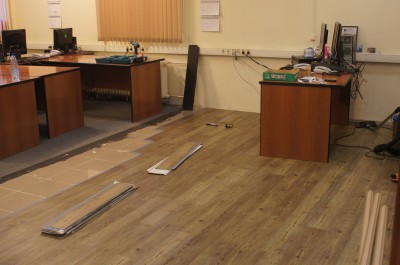Strength and Durability: How to Protect a Concrete Cover from Destruction
Hello!
Three years ago, the yard was concreted, the thickness was 100-150 mm, it was not covered with anything from above. Now the destruction of concrete has begun. Tell me what can be done, how to save concrete from destruction, if you make a screed, then what to add to the solution and how to cover it from above?
Vyacheslav.
Expert Answer
Hello, Vyacheslav!
Concrete, although one of the strongest and hardest building materials, is, unfortunately, very susceptible to the negative effects of the external environment. That is why, in the manufacture of concrete products and structures by the industrial method, they are subjected to various methods of hardening and protection.
All you had to do after arranging the concrete pavement on the street was to impregnate its surface with a water repellent. The fact is that the lion's share of destruction during the operation of concrete sidewalks, blind areas and garden paths is accounted for by moisture penetrating the micropores of the material. In winter, the liquid freezes and expands, forming many small cracks in the concrete structure. From this, delaminations, dips, swelling and other defects arise. The water repellent layer has a water-repellent effect, therefore, with it, the concrete coating lasts much longer. It is also important whether the foundation was properly equipped before laying concrete. The presence of a good drainage pillow under the screed also contributes to its successful and long-term operation in the future. But, as they say, what has been done is done, and therefore all that remains for you is to repair the old tracks and take into account your mistakes in the future.
We will not recommend laying paving slabs on the old pavement, because for some reason you did not do this initially (most likely due to higher financial costs). And, nevertheless, such a reconstruction would be optimal in terms of appearance and durability.
In your case, you can make a repair screed with a thickness of at least 5 cm on top of the old concrete coating. This method is often used by home masters, although it is not without drawbacks. The most important of them is the presence of the so-called cold seam. With this concept, experts designate the plane of contact of dry concrete with fresh mortar. Due to the reduced coefficient of adhesion between the new and old coatings, frost resistance, moisture resistance and concrete strength drop.
To reduce the negative impact of a cold joint, before filling the screed, the surface should be well cleaned (best with a high pressure washer) and thoroughly moistened with water. Work is best done in mid-spring or early autumn, with an average daily temperature of at least 15 ° C. To prepare the mortar, use exclusively fresh cement of the PTs-500 brand (in extreme cases, you can also use PTs-400), sifted river sand and fine gravel in a ratio of 1: 1.4: 2.9 (1: 1.1: 2 , 5 - for PC-400). The amount of water should be such that the solution is not liquid, and moisture on the flooded surface emerges only after careful tamping. It will be very good if you can find polypropylene or polyvinyl chloride fiber - adding it will create a reinforcement cage in the concrete structure and make it even stronger. Such concrete is guaranteed to not crack during operation.
The screed from granite screenings also has good characteristics (this must be the material that is obtained by sifting gray, not white stone) and cement. Such a composition is recommended by people with extensive practical experience in concrete work. The materials are mixed in a ratio of 1: 3, while sand is not added. As in the first case, it should be ensured that the solution is not liquid, since an excess of moisture reduces the strength of the concrete when it sets.
Correctly pour the screed - this is only half the battle. She will be able to meet your expectations only after proper care. To do this, cover the concrete with plastic wrap and spill its surface 3-4 times a day with water from a garden watering can. Such procedures should be done during the first 6-7 days. Full setting of concrete occurs after 4 weeks. After that, the surface of the screed is impregnated with a water repellent (it is best to use compositions on a polymer basis) and cover with a film. The method of application of the protective solutions is described in detail on the packaging, so there is no need to consider this process in detail.
As you can see, the work ahead is serious. And, nevertheless, if you do everything right, you will return the original attractiveness to the old concrete coating, and most importantly, make it strong and durable.



